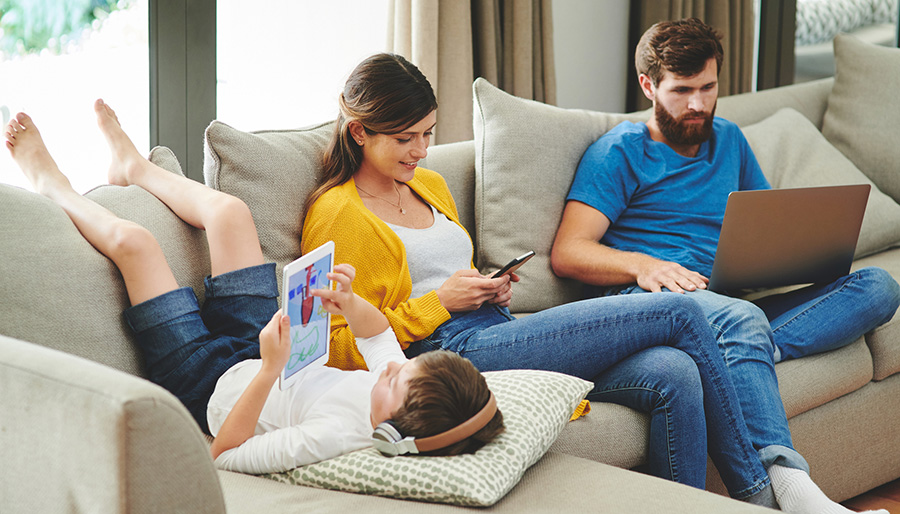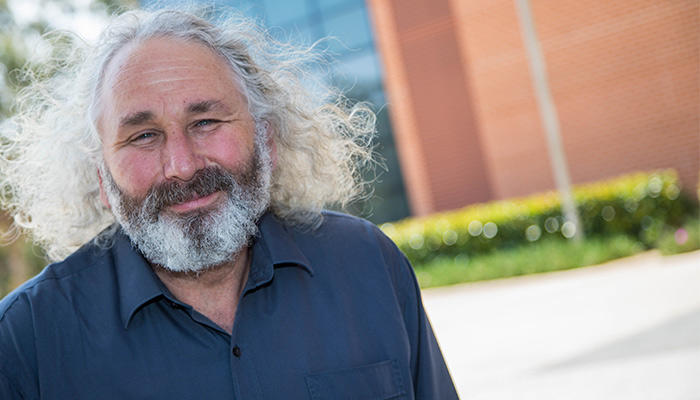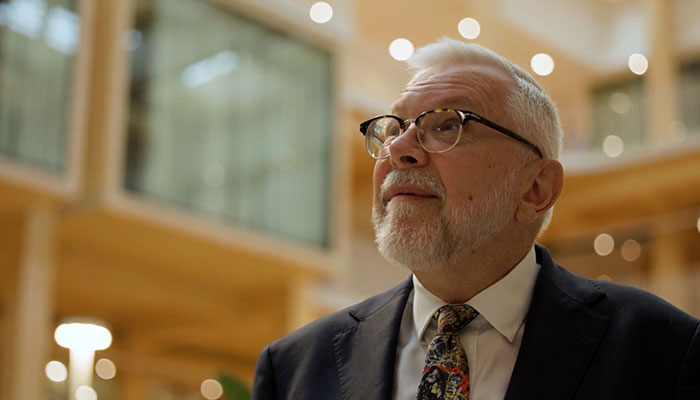Professor Wayne Warburton began developing his theory of a healthy media diet when his daughter was in kindergarten.
“I was about to eat my third Tim Tam and my daughter said, ‘Daddy, don’t eat that! Those are sometimes foods’,” he says.
“I didn’t eat the biscuit, and it made me think that if children can already understand a healthy food diet at the age of five, then maybe they can also understand a healthy media diet.”
After 16 years of working through his idea, Professor Warburton and Macquarie University PhD candidate Mic Moshel have outlined the principles of a healthy media diet in a chapter of the recently released book, The Importance of Media Literacy: Getting the Most from the Digital World.
The book, which Professor Warburton also co-edited, acts as a guide for psychology professionals, educators and parents to navigate the mine‑filled landscape of screen use and media consumption, covering topics such as the impact of video games, social media and screen addiction, fake news and misinformation, and the role of big tech in our lives.
About three per cent of Australian teenagers qualify as having a clinical problem with video game overuse, which is included in The Diagnostic and Statistical Manual of Mental Disorders (DSM-5) under the diagnosis of Internet Gaming Disorder. Clinical-level problems are also reported with other forms of screen use, including social media, internet and phones, although there is as yet no official diagnosis.
Screen disorders can result in poor performance at school, a breakdown in relationships and even violent behaviour if a parent or carer tries to intervene.
Around 10 per cent of Australian children and teens are estimated to have a problem with screens, but the majority do not reach the threshold for a clinical diagnosis.
Overuse and addiction are not the only problems with screens. Other serious issues include cyberbullying, abuse and exploitation, misleading content, information theft, and adult content that is too scary for children.
If your children see you being emotionally unavailable because you’re always scrolling social media on your phone, or checking work emails after hours, or searching for things online, then they’re likely to say, ‘Why are you telling me to be on my screen less when you’re always on yours?’
Professor Warburton says a healthy media diet is similar in principle to a healthy food diet: moderate overall consumption, with an emphasis on good media and small amounts of less helpful content, and ensuring everything is age-appropriate.
How much is too much?
The definition of moderation varies depending on the child’s age. For the under-twos, it means no screens apart from video chats with family members.
“There are no studies showing any screen benefits for children younger than 18 months to two, even from educational content like Play School or Sesame Street, because they’re too young to benefit from such content,” Professor Warburton says.
“However, studies are increasingly showing there is potential for things to go wrong in areas like language development, social development and the parent-child relationship if very young children are spending too much time with screens.”
For the two-to-five age group, national guidelines recommend no more than one hour a day of good-quality educational material, with the proviso that a parent be there to mediate the content and share the experience.
For school-aged children, guidelines previously recommended no more than two hours of screentime a day, but this has recently been revised and the creation of a family media plan is now recommended instead.
What does a family media plan involve?
Professor Warburton says in creating a plan, negotiation is important: everyone needs to sit down together to discuss limits and rules for how the family will use devices.
Helpful inclusions are turning off devices when not in use, no screens in the hour before bedtime, and making the dinner table, bedrooms and parent-child playtime screen-free zones.
When setting time limits, it is a good idea to ensure at least one hour of outdoor activity for every hour of recreational screentime. And Professor Warburton says that everyone in the family needs to be prepared to follow the plan, not just the children.
“Parents need to provide a good role model, because children are always watching us, like my daughter with the Tim Tam,” he says.
“I think it’s fair to say that we’re not all doing that when it comes to our screen use.
“If your children see you being emotionally unavailable because you’re always scrolling social media on your phone, or checking work emails after hours, or searching for things online, then they’re likely to say, ‘Why are you telling me to be on my screen less when you’re always on yours?’
“We need to be prepared to follow whatever rules we agree on.”
Leafy greens versus bad fats
Previous research has shown that excessive screentime can have negative impacts on a child’s behaviour, sleep, schoolwork, relationships and attention, and that media content matters.
Like the food pyramid, there should be more of the good stuff (educational, prosocial, affirming, positive media) and less of the unhelpful stuff (violent, antisocial, frightening, disaffirming, fake media).
For this reason, Professor Warburton says it is important for parents to know not only how much time their children spend on their devices, but also what content they experience (and whether it is age-appropriate), what they are doing, who they are interacting with and how these interactions leave the child feeling.
“Research has shown that up to a quarter of adults still have phobias or fears relating to a scary experience with media,” he says.
“That could be from a horror movie we watched when we were too young, but it could also relate to what’s on the news.
“We need to be able to mediate what they’re watching, or playing, or who they are talking to, and always be there to talk to them about how they feel about it.”
Tips for creating a family media plan
- Don’t just impose rules. Make sure everyone feels heard. The plan must work for everyone.
- Agree on time limits, but be prepared to make it a weekly average with more time on weekends and less on weekdays.
- Agree on device-free zones, such as bedrooms and the dinner table.
- Be prepared to limit your own screentime.
- Be aware of what children are doing on their devices and discuss it with them.
- Check out the American Academy of Pediatrics family media plan site, which provides a helpful template to work through.
Consume moderate amounts of good media that:
- is educational
- helps develop skills or understanding
- models desirable behaviour and attitudes
- inspires positive emotions such as joy, love, pride or awe.
Consume less unhelpful media that:
- models or glorifies undesirable or antisocial behaviour such as violence, aggression, substance abuse, misogyny, hate or negative stereotypes
- encourages body dissatisfaction
- presents fake news and misinformation
- influences young people to do things that are not in their best interests, such as spending money they don’t have, gambling, or relying on substance use
- is passive or ‘mind-numbing’ as this can lead to poorer attention and focus.

Professor Wayne Warburton (pictured above) is a registered psychologist and a researcher at Macquarie University’s School of Psychological Sciences.
The Importance of Media Literacy: Getting the Most from the Digital World, edited by Chrysalis Wright, Lesley-Anne Ey, K. Megan Hopper and Wayne Warburton, is published by Cambridge Scholars Publishing.
More information and resources on screen use and online safety are available at the website of the Australian eSafety Commissioner.



